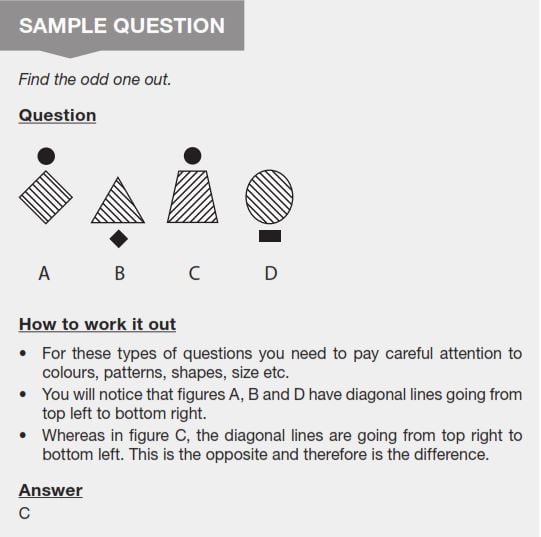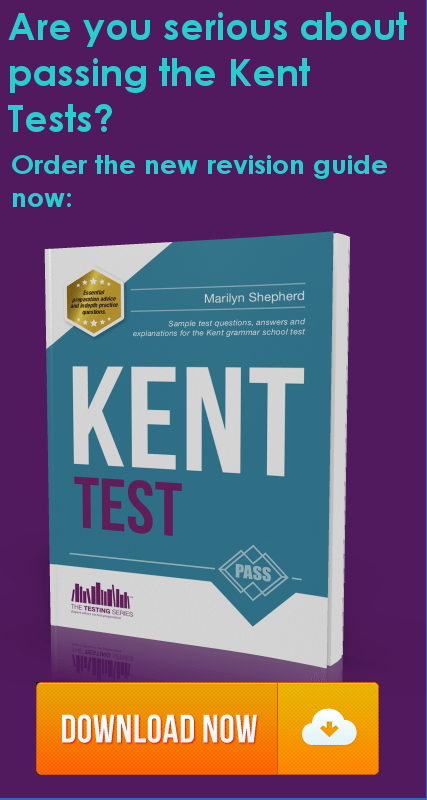If you are a parent with a child in primary school, and are looking to further their education at a Kent-based grammar school, you can register your child for the Kent test. Kent is the largest and most competitive grammar school area in the country, with 35 selective schools. Therefore, it is imperative that prior to registering your child, you are prepared for the selection process and the challenges ahead. This guide will put you in the best position to accomplish that.
In order to prepare for the Kent test, you need to know about the following:
1. Kent Test Registration – When it is, how to apply, and when registration closes
2. Kent Test Format – What the Kent test looks like and important instructions for completing it.
3. Kent Test question types – An explanation for the different kinds of question that your child will face in the Kent test.
4. Kent Test Revision Tips – Advice for passing the Kent test.
5. Useful links – Resources for you to go forward in your Kent test preparation.
How to Register for the Kent Test – Kent Test Registration
Registration for the Kent test 2018 took place on the 1st June 2018 and closed on 1st July 2018. The test will take place on 6th September for children who already go to school within Ken,t and 8th September for children who are at schools outside of Kent. The results will be processed/sent out on the 11th October. It is strongly advised that you send your application via email, or use the Kent Online Admissions system, https://ola.kent.gov.uk/kccadmissions/prefs.php. You can also pick up a copy of the application form from your primary school, or call 03000 41 21 21.
Take a look at the following table to get an idea of the key dates for the Kent test:
| Event | Date |
| Test taken by pupils in primary schools in Kent. | Thursday, 6th September 2018 |
| Test taken by pupils not in primary schools in Kent. | Saturday, 8th September 2018 |
| Assessment decision (test results) released to parents. | Thursday, 11th October 2018 |
| Nation-wide closing date for secondary school application forms. | Wednesday, 31st October 2018 |
| National Offer Day – offers are released via email and letter. | Friday, 1st March 2019 |
| Welcome letters to students from secondary schools sent out from this date onwards. | Tuesday, 5th March 2019 |
| Deadline for late applications. | Friday, 15th March 2019 |
| Deadline for lodging appeals. | Friday, 29th March 2019 |
Kent Test Format – The Structure of the Kent Test

While no specific information has been released about the testing process itself, it is fairly safe to assume that the test will remain similar to the previous year. The format was as follows:
The first test was an English and Maths paper, in multiple choice format. It took 1 hour to complete, with two 5 minute practice exercises preceding a 25-minute sub-test. The English section was the first and involved a comprehension exercise followed by a testing of literacy skills. Students were then required to stop and wait for instructions before beginning the Maths paper.
The second test was a reasoning paper, consisting of both verbal and non-verbal multiple choice questions. The test will take 1 hour to complete, with both sections of equal length. The non-verbal section will be split into four timed sections.
Following this, there will be a Creative Writing exercise. This exercise will only be used/marked in the instance of borderline cases, in which case the work will be referred to the local Headteacher Assessment Panel. It will take 40 minutes to complete, with an extra 10 minutes given at the start in order to plan the piece. Students are generally given a list of 5-6 topics to choose from. In the past, these have included-
- Having an adventure
- Visiting relatives
- A storm/bad weather/crisis situation
- Instructions for a computer game
- A letter of complaint
- Debating for/against various topics
Therefore, by looking at this list, we can see that there are 4 key areas in which you should prepare your child: English, maths, verbal and non-verbal reasoning. A focus on Creative Writing would also be useful in preparing your child for the testing process. We will cover potential questions and revision tips, later in this article.
Kent Test Question Types
In this section, we will explore the types of question your child should expect to see when they sit down to take the test. Through constant practice of these questions, you can help them to achieve the best possible results. Below, you will find a list of sample English questions.
Kent Test English Questions
The English section of the Kent Test will focus heavily on grammar, spelling, punctuation, comprehension, and understanding of key literary concepts such as tense, adjectives, nouns, and verbs.
Sample question:
Add the correct punctuation in order for the sentence to make sense. The sentence may be missing capital letters, full stops, commas, apostrophes, exclamation marks, question marks, speech marks etc.
‘Whos in charge of the rota this week’
How to solve this
‘Who’ needs to be followed by an apostrophe ‘s’. The sentence is also a question, and therefore needs a question mark at the end to indicate it.
Answer: Who’s in charge of the rota this week?
Reading Comprehension
The English section of the test will also test your child’s attention to literary detail. Below are two examples of the type of question they should expect:
Question 1-A
Read the following passage and answer the questions below.
Koala Bears
Koala Bears are not actually bears. They are related to the Kangaroo and Wombat species.
The reason why Koala Bears are named this is because they look like teddy bears. Koala Bears are an endangered species, with 90% of the population dropping in the last 10 years.
Destruction of their habitat, and development of agriculture, adds danger to Koalas.
Question: Why are Koalas called ‘Koala Bears’?
A – They were named after a person.
B – They look like teddy bears.
C – They are a type of bear.
D – Koala is the ancient aboriginal name for bear.
Answer: B – They look like teddy bears.
Question 1-B
‘Koala Bears are an endangered species…’
Question: Which of the following is closest in meaning to ‘species’?
A – Animals.
B – Humans.
C – Groups of.
D – Plants.
Answer: C – Groups of
You should also expect the English section of the test to test your child’s knowledge of literary terms and grammatical nuances. Below are some examples of this:
Question 1
What is the antonym for ‘dark’?
A – Unlighted.
B – Moody.
C – Dismal.
D – Light.
Answer: D – Light
How to solve this:
Antonym means the opposite. Therefore, the opposite of dark would be light.
Question 2
What is the prefix to ‘like’?
A – In.
B – Dis.
C – Ly.
D – Ned.
Answer: B – Dis
How to solve this:
The prefix means adding another word before. Therefore, the only word that could be added on to ‘like’ is ‘dislike’.
Question 3
What is the adjective in the sentence below?
‘The final exam was difficult’
A – Difficult
B – The
C – Exam
D – Was
Answer: A – Difficult
How to solve this:
The adjective is the describing word. The subject of the sentence is the exam, described as ‘difficult’. Therefore, the correct answer is ‘difficult’.
For more sample questions and answers, in English, Maths, Verbal and Non-Verbal Reasoning, please see our detailed ‘Kent Test’ guide workbook.
Kent Test Revision Tips
Revision can be a highly stressful period, for both parents and children. It is, therefore, crucial to maximise the time and resources available to you, in the lead up to the test. If you are organised and efficient, with a clear revision strategy, the Kent Test will be far easier, as a result. Here we have compiled a short list of revision tips to help you through the coming months.
- Create a revision schedule, and keep to it. Once you have covered a topic, cross it off the list. Not only will this help you now, but in the final months before the exam, you may choose to go back over the list. You will already have a clear structure on which to base this.
- Allow your child plenty of breaks. Part of your revision strategy should be in helping your child focus for the entirety of the exam, without losing concentration. Therefore it is highly important that they aren’t overworked.
- Switch rooms. Often a change of environment can aid concentration levels, and lead to better results.
- Active revision. Past papers and simulated exams are a proven, and very effective method of revising. It will give both you and your child a clearer idea of the structure of the exam, and therefore won’t have any surprises when it comes to taking the actual paper. Do these practice papers under timed conditions, so your child is prepared for the speed at which they will need to produce their answers.
- Consider hiring a tutor. This can be an expensive, but extremely worthwhile venture. As a parent, you may be unprepared for the difficulty of some of the questions. There are, however, professionals who are better placed to teach your child the in’s and out’s of verbal and non-verbal reasoning, the latter of which is often a particularly trying experience.
- Last of all, stay positive, and stay patient. The testing process can be an emotionally exhausting time, your job is simply to make sure your child does the absolute best they can.
Kent Test Useful Links
Our Comprehensive ‘Kent Test’ guide workbook


Thank you so much for the advice
You are most welcome! If you need any other tips or advice then please don’t hesitate to get in touch.
Sincerely,
The How2Become Team
Thank you’d o much for the guidance.